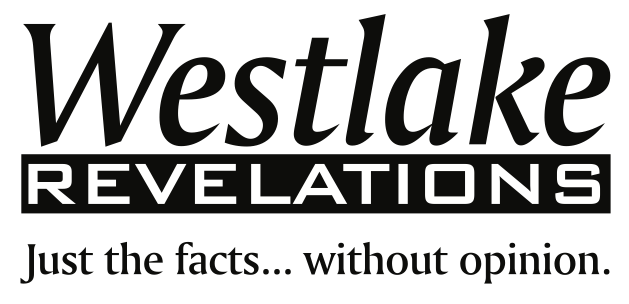Synopsis
If you get your water from Las Virgenes Metropolitan Water District, you should have recently gotten a letter in the mail about water budgets and your allotment of water. LVMWD gets all of its water from Metropolitan Water District of So. California. MWD is cutting LVMWD’s supply by 20%, and that’s how much local area use must decrease by.
LVWMD is 2nd only to Beverly Hills in per capita water use in all of MWD. Westlake Village residents use a bit less than Agoura and Calabasas, but Westlake Village is also slightly cooler too.
Rather than an across the board 20% cut which would penalize those that are already water efficient, LVMWD chose to give an allotment to each household for indoor use, and then additional allotment based on property size. Commercial properties are reduced by a fixed percentage. The new program begins July 1, but you won’t pay your first bill on the new setup until September.
The surcharges for exceeding the budgeted amount are $3 per billing unit, but this is not about the money. LVMWD cannot get additional base allocations from MWD. And, the water shortage is not just about below average rainfall, but also it’s due to judicial limitations that severely limit the amount of water that can be transferred from North to South.
There are a variety of ways to reduce water usage, but the first focus is clearly outdoor irrigation. The key factor to look for is runoff. If you see runoff, you are definitely watering too much, but there are a number of other resources at: http://www.lvmwd.com/
Additional Details
Each single family household gets 8 units of water per month (a unit is 748 gallons). But, the greatest use (70-98%) is use for irrigation. A quarter acre property would get 323 units of water per year (averaging almost 27 units per month). To put this in perspective, it is possible for a family of four, without being fanatical to use as little as 3 units per month for inside use. (Allotment varies from month to month based on seasonal needs: July/Aug are the greatest allotment.)
With 22,000 customers to analyze, LVMWD will be working from East to West in the district to prepare information on each property’s billing cycle allocation (e.g., how much water is allocated in each bi-monthly billing cycle). Depending on your location (Westlake Village will be towards the end since it is furthest West), sometime between July 1 and August 31, you will receive your list of month allocations.
For the larger properties, the allocation is not intended to provide enough water to irrigate the entire property, so there’s definitely a weighting towards the core of each property (e.g., the smaller end).
Many people are surprised by the lot sizes reflected by the LVMWD letters. Instead of trusting unreliable county records on lot sizes, LVMWD instead calculated based on parcel records the size of each property. The area calculated is only that part of the property that you own. For example, easements or other areas that you are responsible for maintaining are not included in the area calculation. It’s important to note, however, this is done in a consistent manner across the area that LVMWD serves.
If your household has more than 4 people in it (no, household pets don’t count), you can contact LVMWD for additional allotment. If you own a horse, they also qualify for additional allotment.
One of the more interesting tools on the LVMWD.com web site is to view your account at http://ebill.lvmwd.com/login.asp . Once you login (you’ll need your customer number and account number from your bill or letter), you can look at your â??Usage Historyâ?, and more specifically, do a Consumption Comparison. Here, you can compare your property to the average for your street, your region, or the entire city.
Inside your house, some of the biggest offenders are leaks, showers, and toilets. Even the smallest of leaks can add up to a considerable amount of water. And, the newer (newer meaning in the last 1-2 years) High Efficiency Toilets (HETs) save a considerable amount of water (and actually work as well). Unfortunately, all water conservation rebate programs are now suspended due to the state budget crisis. In addition, if you use the dish washer or washing machine without a full load, there’s considerable waste there.
Toilets may be leaking even if they don’t make noise. According to the LVMWD web site you can easily detect a leak using a simple methodology. â??If you use an automatic bowl-cleaning device, remove it. When all coloring is gone, you’re ready for the next step. At least 5 minutes after the last flush cycle, carefully remove the toilet tank cover. Gently add 4 to 5 drops of blue, green, or red food coloring into the tank (not the bowl). DO NOT FLUSH. Wait 10 to 15 minutes. If you find color in the bowl, there’s a leak.â?
Again, the first focus is landscaping. You should be using a Weather Based Irrigation Controller to water only when needed. And, you can get a lot more benefit out of regular, but shorter watering times. Runoff is the key flag to look for. Focus on minimizing the runoff by reducing the watering durations.
You may also want to look at reducing evaporation by installing a pressure regulator for your irrigation systems. Many homes only have a pressure regulator for the indoor use, not the irrigation system. Or, if you are so inclined, you can substantially reduce your water use by installing â??California Friendlyâ? plants. See http://www.BeWaterWise.com
You can learn to read your water meter on the LVMWD web site at http://www.lvmwd.com/index.aspx?page=34
LVMWD offers free consultation as to how you can further reduce your water consumption. Or, if you simply have any other questions, you can call LVMWD at 818-251-2190 between 8am-4pm workdays.


